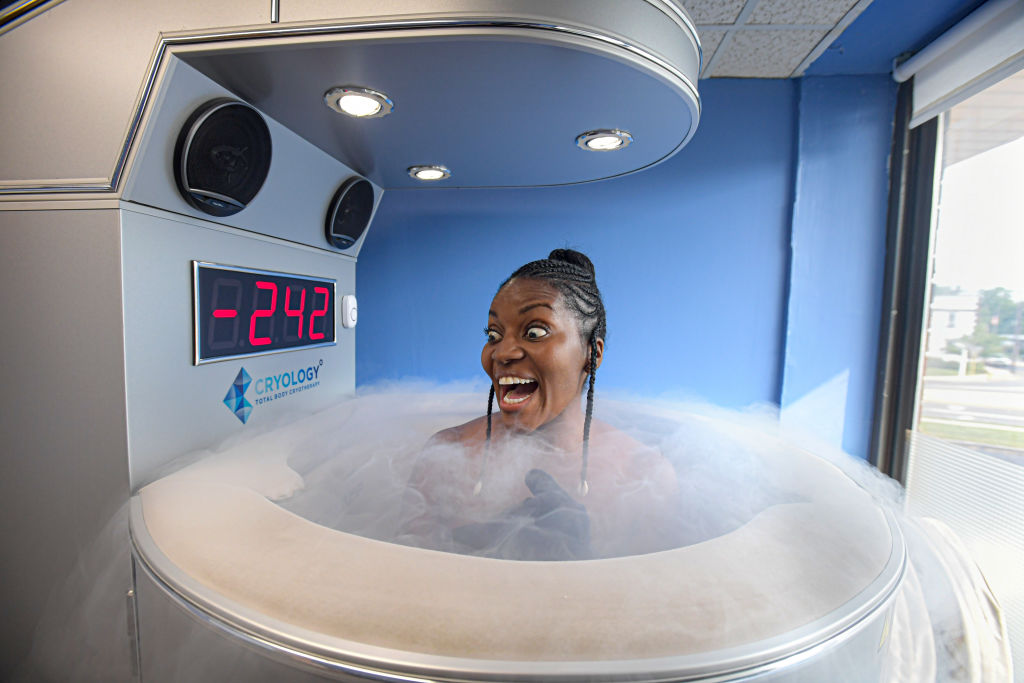
Source: Newsday LLC / Getty
By now, you’ve probably heard of cryotherapy or even received promotional offers for a free or discounted session at a local spa. Photos of cryotherapy look almost futuristic, like a human stepping out of a chamber that froze their body through the apocalypse. In reality, cryotherapy isn’t so scary or even fringe. In fact, forms of cryotherapy as we know it today date back to the 19th century, and other methods that involved extreme cold to treat ailments date back to the ancient Egyptians, according to a study from the Journal of the Royal Society of Medicine published in the National Library of Medicine.
If you’ve been curious about trying cryotherapy but need more information, here’s a look at what you can expect from this treatment.
What Is The Cryotherapy Experience?

Source: Daniel Chetroni / EyeEm / Getty
Cryotherapy is a non-medical treatment that usually takes place in a spa or a comparable setting. There are two kinds: local cryotherapy and whole body cryotherapy (WBC). Each involve exposure to extreme cold, and the air is cooled using liquid nitrogen. In local cryotherapy, you might have cold temperature applied to a specific part of the body like the back or face.
In WBC, you either step into an enclosed chamber that has an opening for your head, or you step into a cooled room and receive head-to-toe treatment. The chamber or room will be set to somewhere between negative 220 degrees Fahrenheit to negative 300 degrees Fahrenheit. You will remain in the chamber or room for two to four minutes.
Cryotherapy is often confused with ice baths and cold water therapy but these are not the same. Cold therapy uses cold air while ice baths or cold water therapy use cold water. However, they can reportedly offer some of the same benefits.

0 Commentaires